
NZIER assessment of the potential impacts of exotic Caulerpa
The Hauraki Gulf Forum commissioned this report on the potential impacts of exotic Caulerpa
... READ FEATURE
The Hauraki Gulf Forum commissioned this report on the potential impacts of exotic Caulerpa
... READ FEATURE
Invasive species or ‘pests’ pose a significant threat to native […]
... READ FEATURE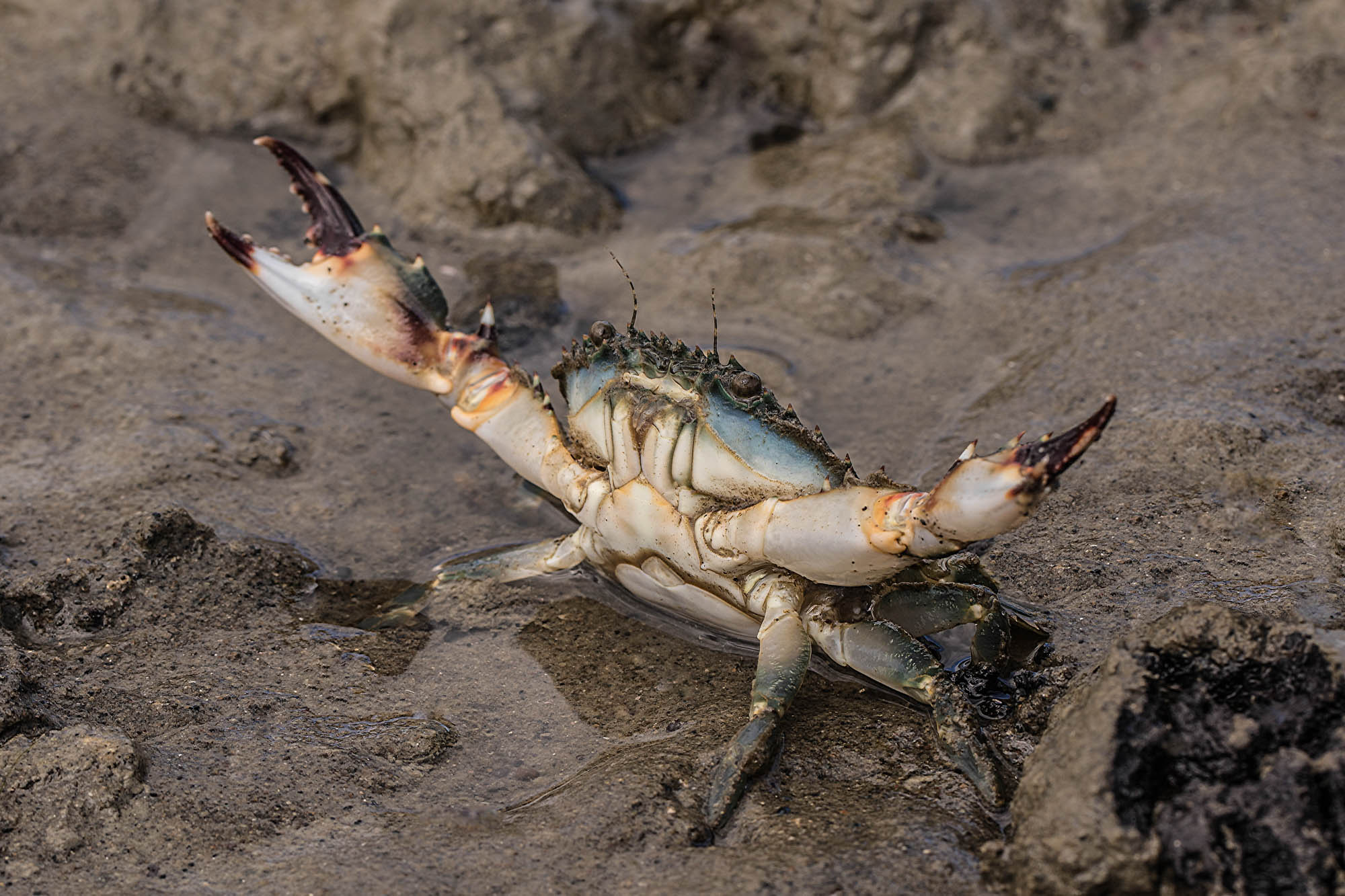
Terrestrial pests such as possums, rats and stoats and the […]
... READ FEATURE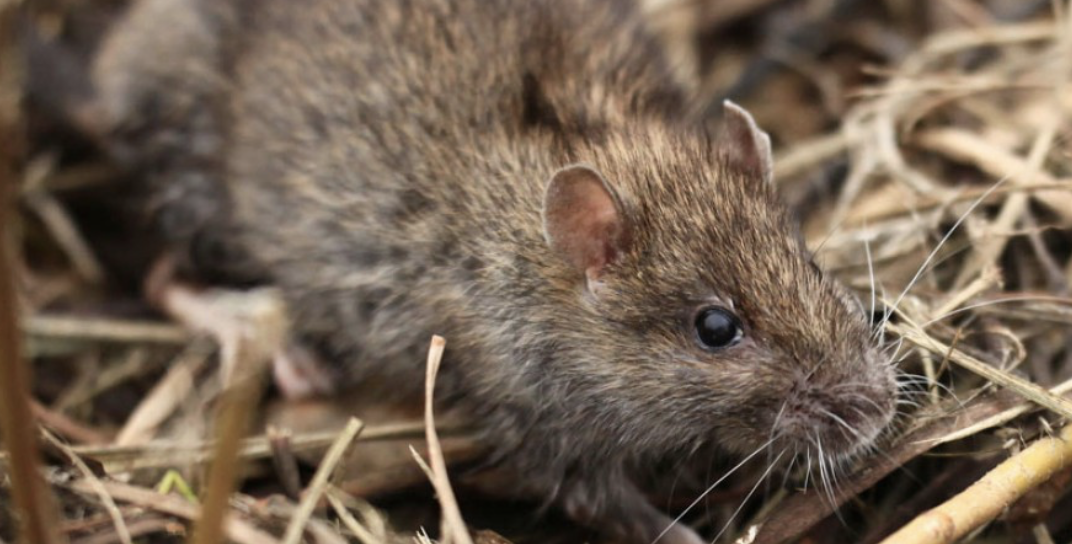
A partnership between Auckland Council, adhesives company Selleys, and peanut butter producers Nut Brothers is deploying 22,000 rat bait blocks and 160kg of peanut butter. The Talon wax blocks will be used in continuing trapping efforts on the Hauraki Gulf Islands and in remote rural areas as part of the Pest Free Auckland Programme:
According to Brett Butland, Auckland Council’s Pest Free Auckland Director, an unusually high seeding led to a wealth of food for native species. This has also fueled high populations of pests such as rats and stoats. These pests pose a serious threat to native wildlife as predator populations build up during the spring and summer months.
“We want to stay ahead of the game and ensure our predator free islands remain that way.”
“We know that rats prefer organic oils – like the ones contained in peanut butter – and they’re more likely to draw the pests to the bait stations. The rat bait and peanut butter work really well together.”
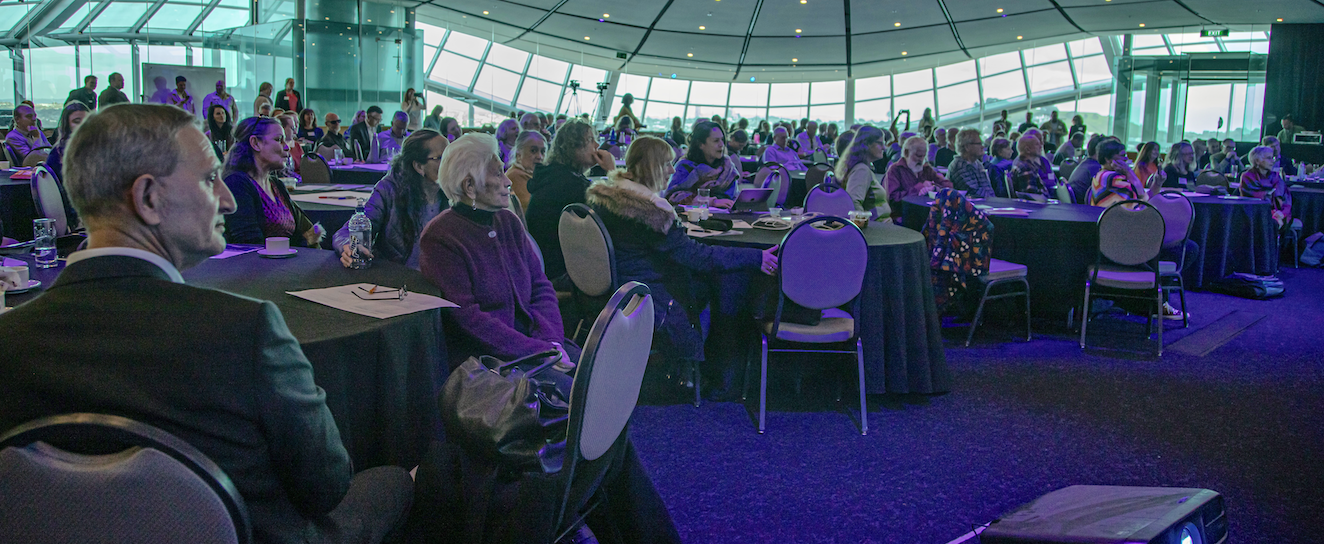
The 2019 Hauraki Gulf Marine Park Conference – Making Waves: Protecting and Restoring the Marine Park – saw over 250 participants flock to Auckland’s War Memorial Museum at the end of August. The annual event, which was held on August 27, saw an audience treated to a range of engaging and interactive presentations about the Marine Park which can be viewed here (http://gulfjournal.org.nz/seminar-talk/?seminar-name=2019-making-waves), but they also had the opportunity to participate in group sessions as a collaborative approach to further shape the Forum’s recently announced Big Goals of at least 20% marine protection and 1000sq kilometre of shellfish restoration.
The Holdaway Awards, which recognise extraordinary contributions to the Marine Park were presented to Betty Whaitiri Williams, former inaugural member of the Hauraki Gulf Forum, and posthumously to Roger Grace, marine biologist who passed away earlier this year.
The Conference also featured a keynote address from the Minister of Conservation at which the Government announced new funding for shellfish restoration (see: https://www.beehive.govt.nz/release/government-helps-fund-efforts-restore-shellfish-beds-hauraki-gulf) and several youth focused elements including a youth panel, virtual reality experience by NZ Geographic and BLAKE, and a view of the future from Young Ocean Explorers. Finally, conference participants worked together on the elements for a potential future vision for the Marine Park.
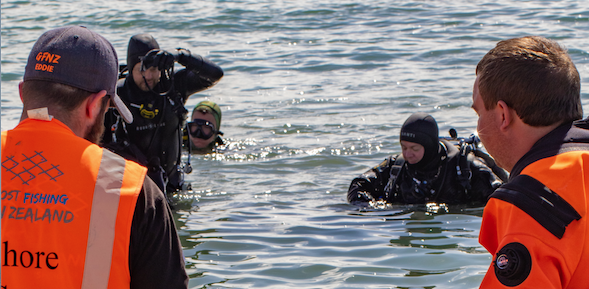
“In the 1980s I helped my Grandfather sink his old freezer in the harbour. It was a fun outing and a good challenge, afterwards I wondered what might inhabit the new white cave on the seafloor. Now days we all know better and I hate to think what toxic chemicals leaked out of that old machine and poisoned the bay,” anonymous New Zealander
A recent Ghost Fishing New Zealand event was held in Okahu Bay to help clean up the seafloor. The detrimental effects of lost fishing gear and rubbish was documented through video and photography.
Over the last four years, Ghost Fishing New Zealand (GFNZ) has worked diligently in cleaning open water spaces. These divers were inspired by overseas divers and named themselves after the ghost nets lost by commercial fishers that they retrieve. The team often pull tonnes of rubbish up from the deep in just a few hours using lift bags.
A station is set up at the event dedicated to sifting through the collection to extract mobile marine life from the rubbish.
“My job was to photograph the species as they were being removed by volunteers under the supervision of marine biologist Eddie van Halen Howard. Adults and children alike crowded around each piece of trash as it came ashore and Eddie enthusiastically identified and told stories about each animal,” – Shaun Lee
The highlight has to be this rarely seen Porcelain Crab (Petrocheles spinosus). It seems to be the first photograph of its species in the wild, though in this case the habitat had been moved.”
If you would like more information about Ghost Fishing NZ, please visit them here or better yet follow them on Facebook.
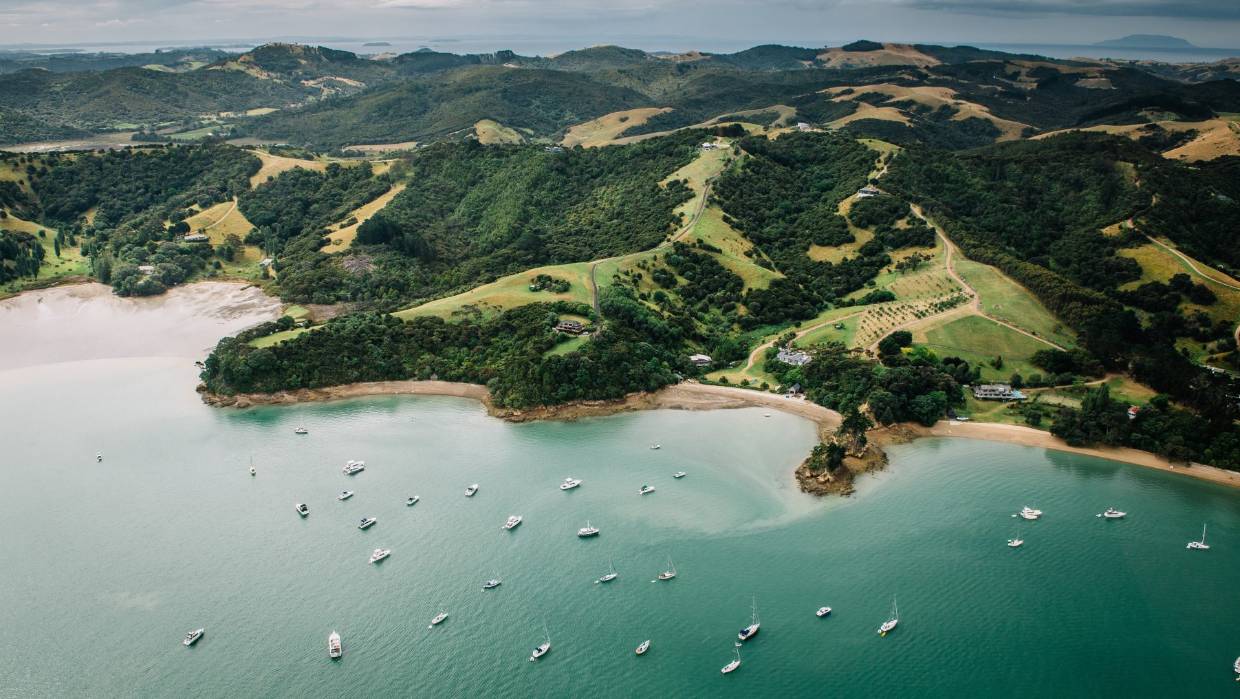
Waiheke Island is already possum free, and now plans are underway to see the island become rat and stoat free by 2025. If successful, this could make Waiheke Island the world’s first predator-free urban island. This is no small undertaking for an Island that has a permanent population of about 9000 residents and over a million visitors annually.
Auckland Council, Predator Free 2050 and Foundation North have jointly provided $10.9 million to cover a five to a seven-year programme on the island called Te Korowai Waiheke: Towards Predator Free Waiheke.
To find out more and get involved visit https://www.predatorfreewaiheke.org.nz/
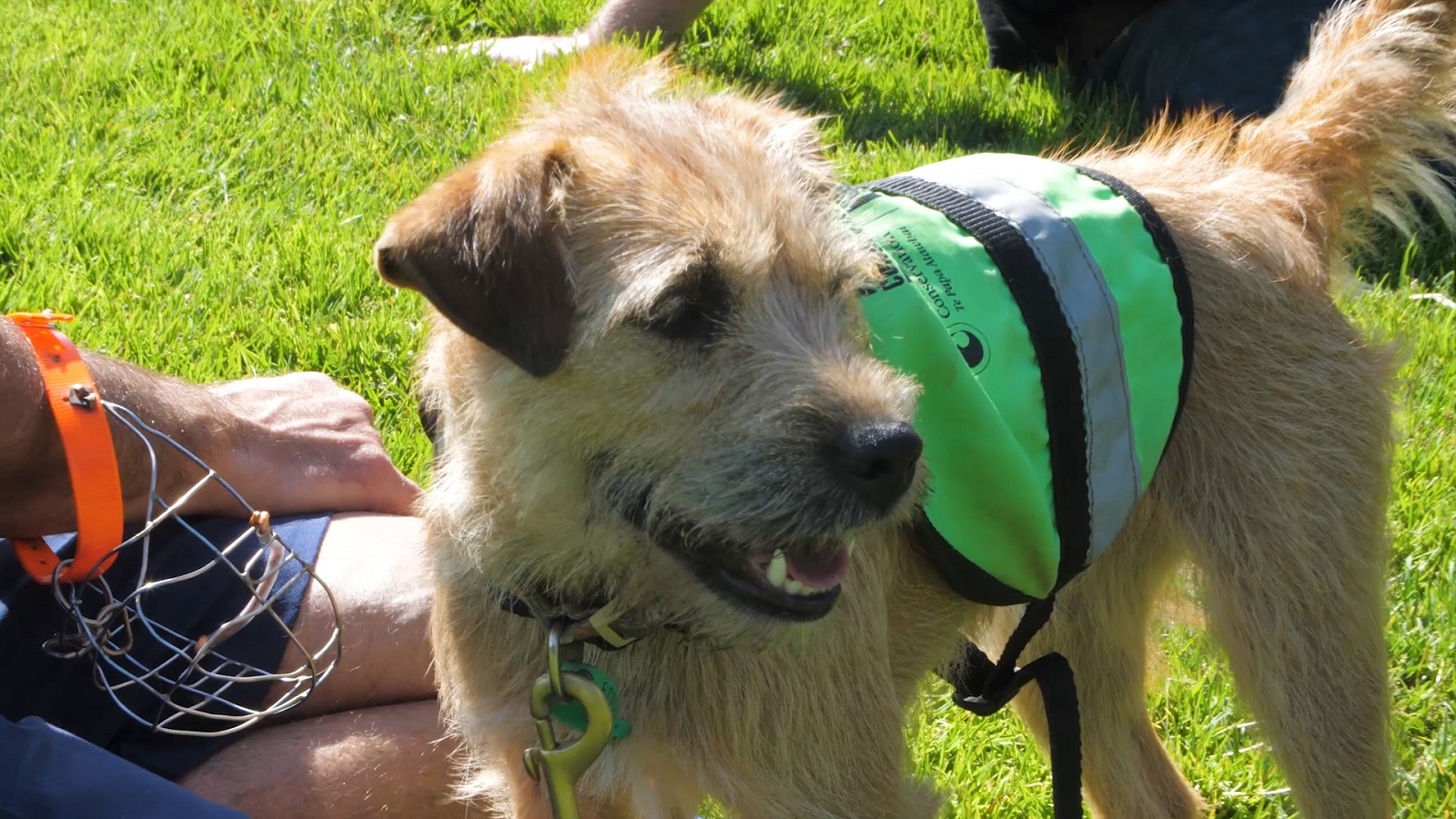
When her training is complete, one-year-old Rosie will be working on wharves and ferries around Auckland to detect any rodents coming to and from the islands. The jagdterrier (German hunting dog) crossed with a border terrier is training to hunt rats and mice that make their way to pest-free islands in the Hauraki Gulf.

Te Mana, te Ihi, te Tapu o Tikapa Moana
... READ FEATURE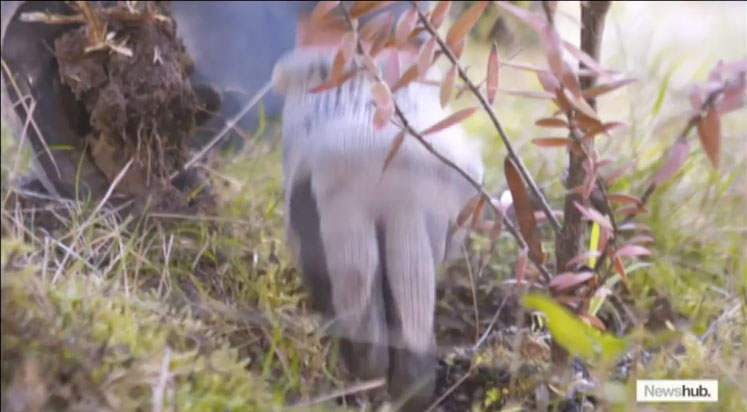
Kauri surrounds the late artist Colin McCahon’s Titirangi house and were included in many of his paintings.
But the area is badly affected by Kauri Dieback with 23 of the 25 trees now dying from the deadly wasting disease.
In a project to save the rich heritage of the McCahon trees, The Kauri 2000 Trust, the Colin McCahon House Trust, and the Bank of New Zealand were behind seeds being taken from their cones and grown to produce young tree’s. Heavily quarantined as they grew, 100 young plants have now been transported to Rotoroa Island and planted by volunteers.
Read more here
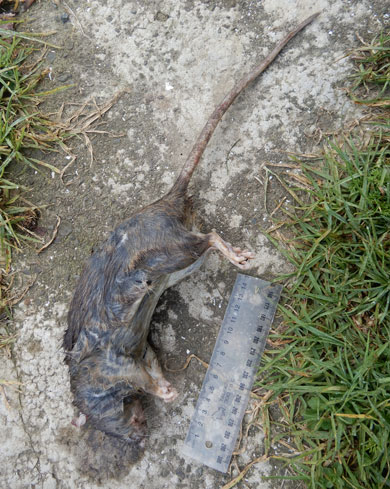
A Department of Conservation ranger and his rodent detecting dog were given the slip by an errant rat on pest-free Motutapu Island. The wiley rodent made a dash for it by swimming down a stream, as the pair closed in on it.
But it seems the rodent may have been looking for company, after turning its nose up at traps baited with food, instead, being caught in a trap that had been soaked in rat scent. The rodent had been loose on the island for at least two weeks, before meeting its end at Home Bay.
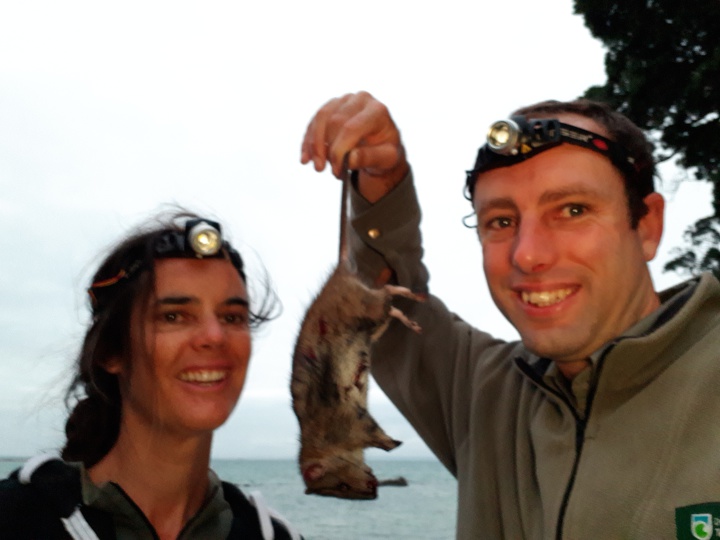
Tiritiri Matangi was put on high alert in early January after rat tracks were detected on the island sanctuary, home to kiwi, takahe and tuatara among other protected wildlife.
Two pest detection dogs were deployed to sniff out the rodent and the Department of Conservation deployed an additional 50 traps and 60 extra tracking tunnels. The rat was finally trapped and instantly killed in a DOC 200 trap on Friday 26 January.
Later in the month members of the public have reported seeing a black cat on the Islington Bay near the causeway between Rangitoto and Motutapu islands, which have been free of cats, rats, possums and mice since 2011.
Motion-sensitive cameras, cat-tracking devices and traps were deployed, along with conservation dogs, trained to detect cats, but the operation was scaled back after 10 days when no activity was detected.
DOC is calling for boaties to be especially vigilant about biosecurity measures when visiting the Hauraki Gulf islands and to leave their pets at home.

A new report has been published. What has it found?
... READ FEATURE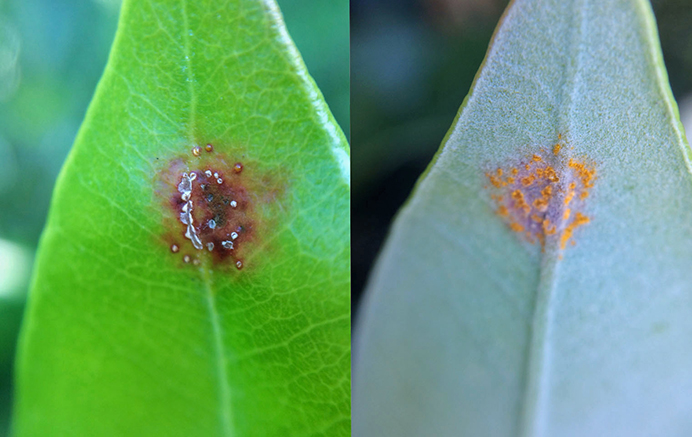
Two discoveries of myrtle rust were made in Auckland in November, on ramarama plants at a private property in St Lukes and on a commercial plant production property in the Waimauku area of west Auckland.
Myrtle rust is a fungus that attacks and can potentially seriously affect myrtle species plants including some significant natives such as pōhutukawa, ramarama, mānuka and rātā. MPI myrtle rust response controller Dr Catherine Duthie says of the 136 North Island locations now known to be infected, 90 per cent involve infection in ramarama or pōhutukawa plants. MPI is considering the implications of the new find.
Any signs of the distinctive yellow fungus should be reported to MPI on 0800 80 99 66. mpi.govt.nz/myrtlerust

The Hauraki Gulf will benefit from Kiwibank’s support for DOC’s Conservation Dogs Programme.
Increased funding means pest detection dog handlers will now be based in Auckland, Whangarei, Warkworth and Whitianga, assisting with biosecurity monitoring, including surveillance and incursion-response. Read more here.
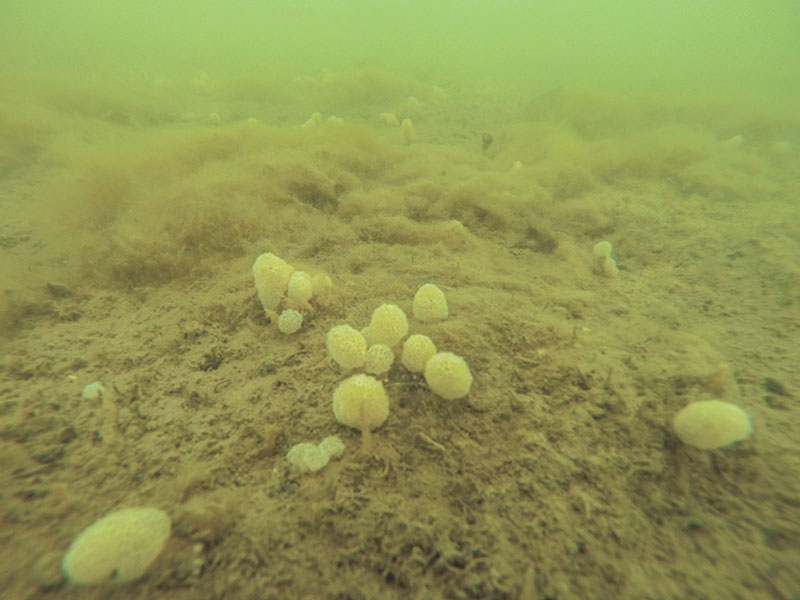
Marine pests appear to be spreading in the Hauraki Gulf. Auckland Council has reported detection of a population of Eudistoma elongatum (Australian droplet tunicate) at Waiheke Island, previously known within Auckland at Mahurangi Harbour and Sandspit. Sabella spallanzanii (Mediterranean fanworm) has been detected at Great Barrier Island, with localised populations at Port Fitzroy and on the hull of a boat at Tryphena harbour.
A Waikato Regional Council survey in 2016 found Sabella within Coromandel harbour and its presence at high densities. The new survey is underway to check 150 random points in and the harbour and remove any organisms found.
Councils are working together with the Ministry of Primary Industries in a Top of the North Marine Biosecurity Partnership and will assess the new information and its implications for future management activities.

Ministry for Primary Industries (MPI) and DOC are working together to address the threat of fungal plant disease myrtle rust.
Myrtle rust has been found in Kerikeri in Northland and Waitara in Taranaki. It is also widespread on Raoul Island in the Kermadec group, about 1,100km north-east of NZ.
This pest could have serious impacts on a wide range of plants in the myrtle family, including pohutukawa, kanuka, manuka and rata, as well as commercially-grown species such as eucalyptus, guava and feijoa.
Anyone believing they have seen myrtle rust on plants in New Zealand should call MPI on 0800 80 99 66. Do not attempt to collect samples as this may aid in the spread of the disease.

The Department of Conservation is publishing report cards to provide a summary of the health of marine reserves.
The first two are for the Cape Rodney to Okakari Point Marine Reserve at Leigh and Tawharanui Marine Reserve. Both show declining numbers of rock lobsters.
www.doc.govt.nz/nature/habitats/marine/marine-protected-areas/marine-reserve-report-cards/

A Hauraki Gulf / Tikapa Moana marine spatial plan launched in December after three years work by a stakeholder working group is available on the Sea Change – Tai Timu Tai Pari project website.
The proposed plan contains five pathways designed to create long-term health and wellbeing for the Hauraki Gulf Marine Park. Transitions to high value wild caught and farmed fisheries, the creation of marine reserves areas and scaled up restoration initiatives, setting load limits and mitigation for sediment and nutrients, local-scale coastal management and ambitious public engagement are outlined in the December issue of the Gulf Journal.
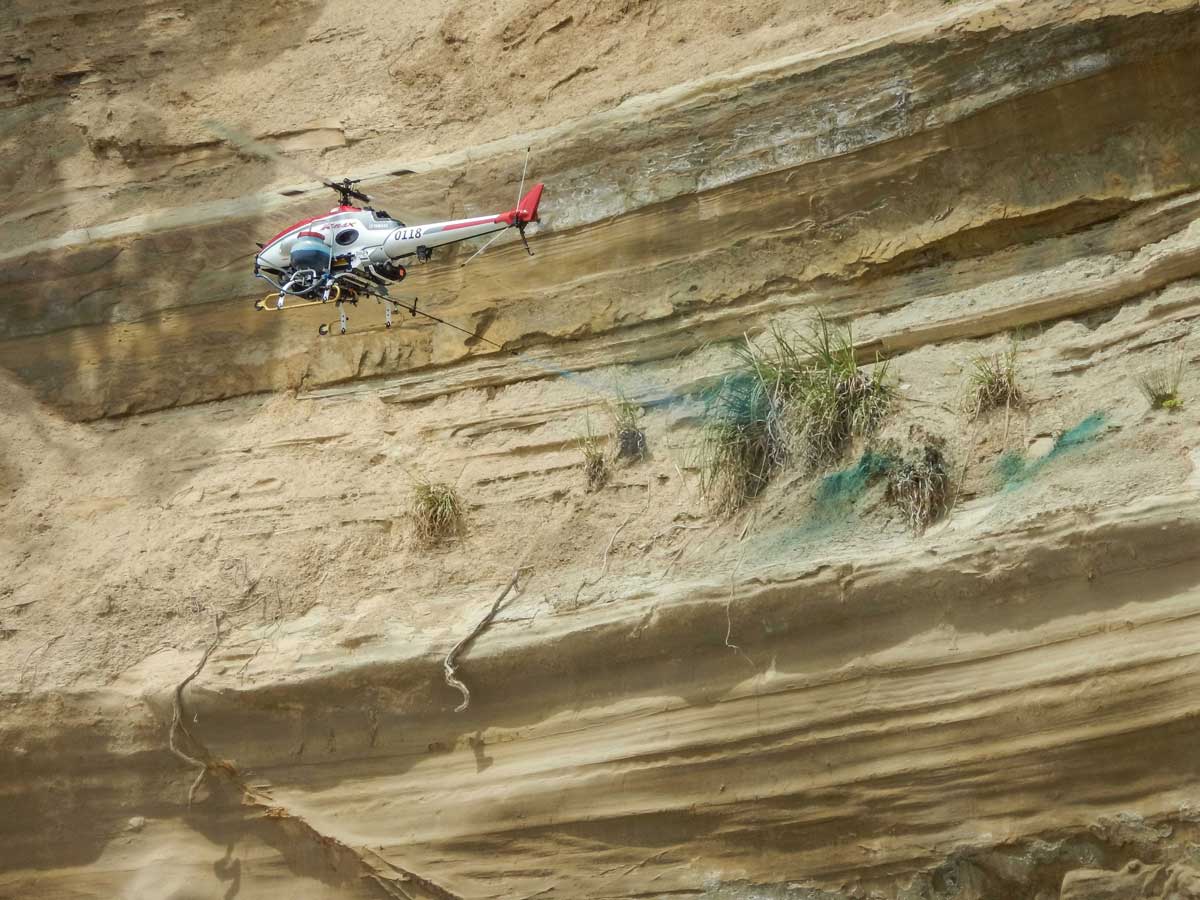
DOC, Motuihe Trust and Yamaha are trailing weed control with an unmanned helicopter.
Weed control on cliff faces can be very expensive often requiring carrying heavy loads to remote places and abseiling or a helicopter.
The RMAX helicopters are piloted by remote control and used in a wide range of industrial and research applications overseas. The trial was a success and the team have plans to further improve the precision of the technology.
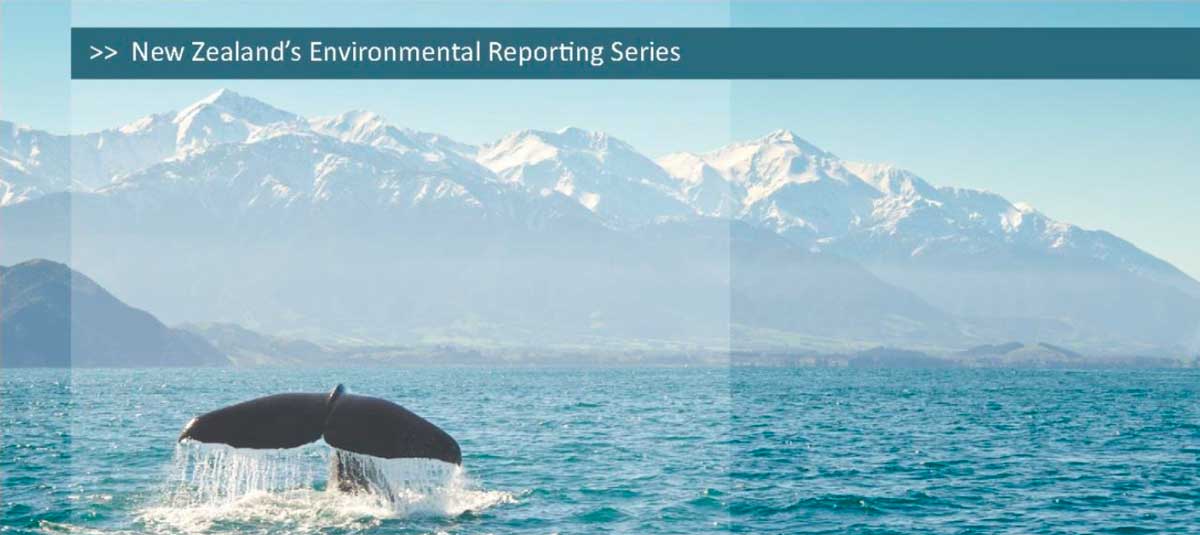
The Ministry for the Environment and Statistics New Zealand released the first individual “domain” report – on the marine environment – created under the Environmental Reporting Act 2015 in November.
The report identifies key issues facing our oceans, ocean acidification, threats to native birds and marine mammals and the state of coastal habitats.
Environment Minister Dr Nick Smith said environmental reports are fundamental to understanding and addressing environmental challenges – an area where data has been lacking.
He also said next year new legislation would replace the Marine Reserves Act “to bring our marine legislation into the 21st Century, recognising that we need varying levels of protection.”
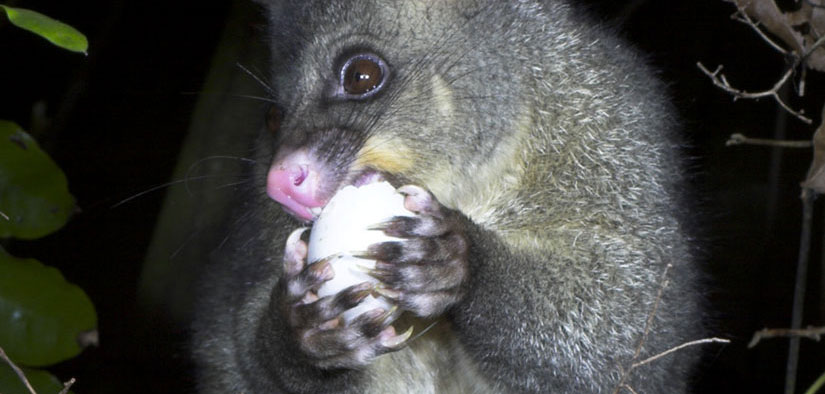
The Government has plans to make New Zealand predator free by 2050.
It will set up a new public-private partnership company by 2017 to help fund large-scale predator eradication programmes.
Predator Free New Zealand Limited will have a board of directors made up of government, private sector, and scientific players. The board’s job will be to work on regional projects with iwi and community conservation groups and attract $2 of private sector and local government funding for every $1 of government funding.
The Biological Heritage National Science Challenge will have an important role in achieving the predator free goal, as not all the technology to get rid of possums, rats and stoats exists.
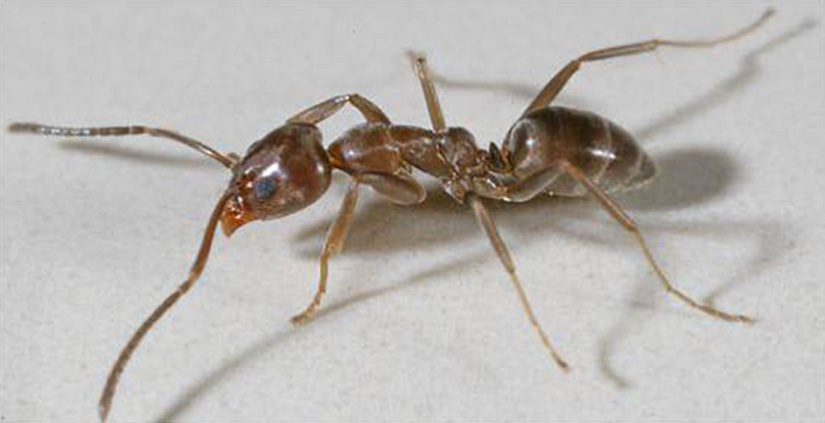
After 16 years of work by Department of Conservation staff (primarily Chris Green who is DOC’s Threats Technical Advisor), and volunteers the Argentine ant has been eradicated from Tiritiri Matangi Island. The insects are extremely difficult to eradicate, and the successful operation follows development of innovative bait and detection methods.
Conservation Minister Maggie Barry said “they may be small, but these ants are one of the most damaging of all invasive pest species. The World Conservation Union lists them as one of the 100 worst eco-invaders on Earth.” Argentine ants can form super-colonies with a huge appetite.
First discovered by Chris on Tiritiri Matangi in 2001, they are capable of killing native insects, lizards and even birds, and compete with them for food resources.
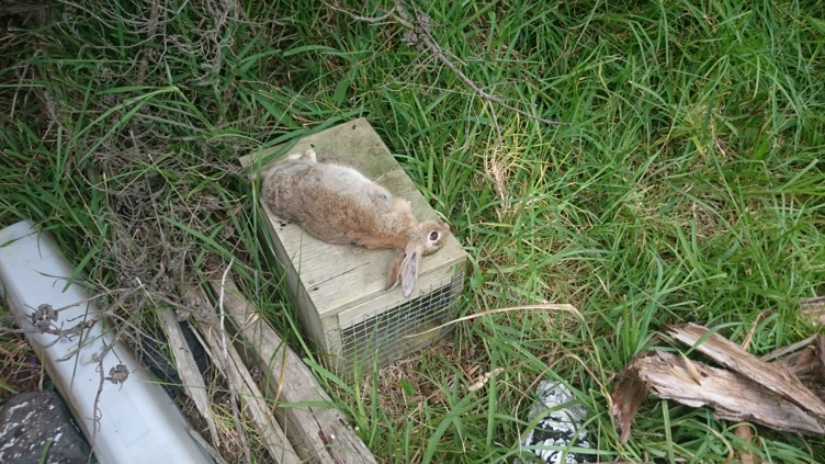
The Department of Conservation has reported that rabbits were recently released illegally on pest-free Motukorea (Browns Island).
DNA analysis of four captured rabbits show they were not all related, suggesting there had been more than one release.
Wilful liberation of animal pest is a serious crime with a $50,000 fine and any suspicious behaviour should be reported to the DOC HOTline 0800 36 24 68.
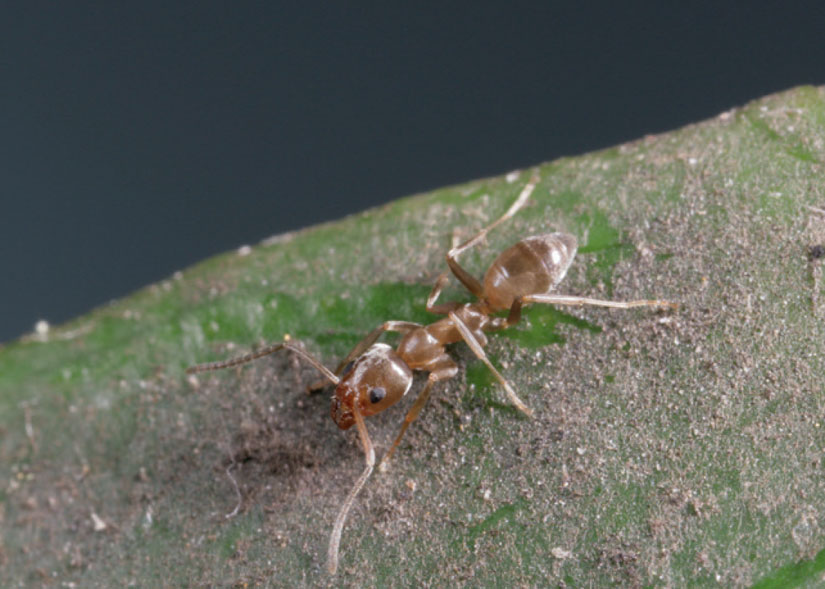
Auckland Council has begun a major overhaul of its Regional Pest Management Plan. The plan is the main statutory document implementing the Biosecurity Act 1993 in the region, and provides a framework for managing plant and animal pests in Auckland, including the Hauraki Gulf.
The review covers changes in pest species and management; along with community expectations and available resources. Particular pest management issues affecting the gulf include control of plants such as Agave americana and Rhamnus and invasive animals like Rainbow/plague skinks and Argentine ants. The council will also consider
the plan’s role in the management of marine pests.
It is proposed that the specific rules which prevent and manage pests on the Hauraki Gulf islands are continued in the new plan.
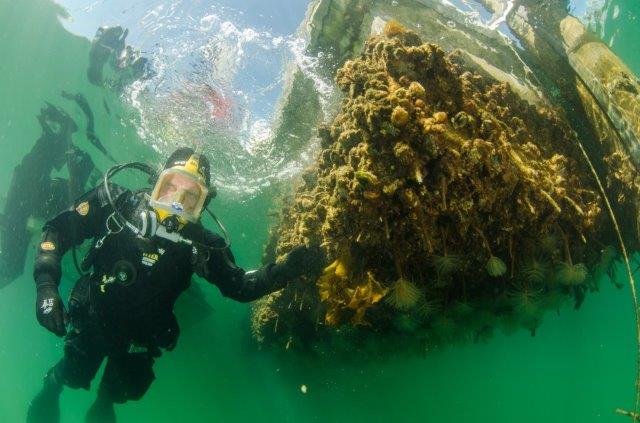
The survey of marine invasive pests in the Waitemata harbour carried out by the Ministry for Primary Industries (MPI) in June has found no new-to-NZ or new-to-Auckland arrivals.
However an ascidian recorded for the first time at the Devonport Naval Base in January has now been detected at the Devonport ferry terminal.
The Mediterranean fanworm and Asian paddle crab are in very high densities throughout the harbour and other species present include Asian date mussel, sea squirt, Japanese seaweed and the clubbed tunicate.
“It’s a wake-up call to keep vessel hulls clean and prevent the spread of pests between areas,” says MPI marine surveillance and incursion senior advisor Tim Riding.
A video on best practice vessel hull maintenance is available at:
www.biosecurity.govt.nz/video/clean-boats-living-seas